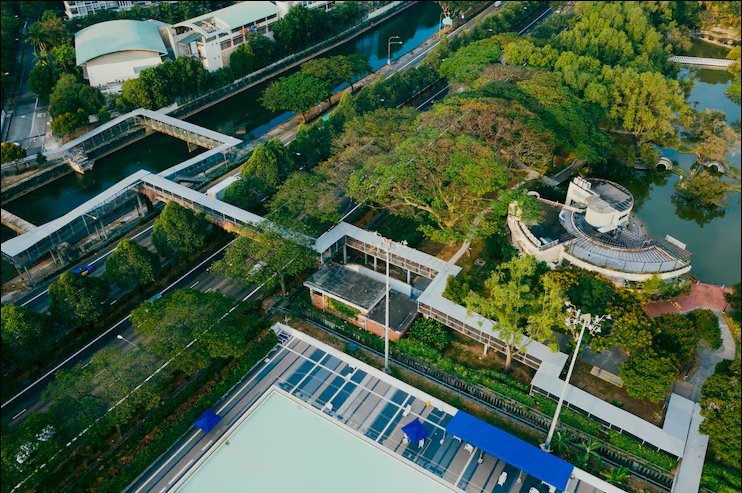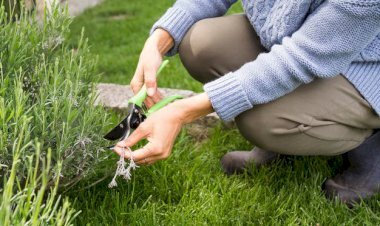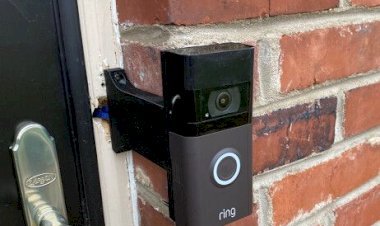Green Roofs in the UK: Eco-Friendly Roofing Solutions for a Sustainable Future
Discover how Green Roofs in the UK help save energy, reduce flooding, and support wildlife. Learn about types, costs, and benefits in this 2025 guide.

More people across the UK are thinking about how their homes and buildings affect the environment. As cities get bigger and the climate changes, the idea of using rooftops to grow plants and grass is becoming more popular. These rooftops, called Green Roofs, are not just pretty to look at. They help save energy, improve air quality, support wildlife, and even manage rainwater better. From houses in quiet towns to offices in busy cities, more roofs are being covered with green spaces. This helps reduce pollution and makes buildings more energy efficient. Some people choose them for the look, while others want to make their homes more eco-friendly. Local councils and organisations are also giving support to people who want to install Green Roofs. In this article we are going to explain what Green Roofs are, how they help the environment, and how they are changing homes and cities across the UK.
What Are Green Roofs and How Do They Work?

Image source: pinterest.com
Green Roofs are rooftops that have plants, soil, and layers underneath to keep water out and help plants grow. They are different from regular roofs because they have living greenery on top. There are two main types: extensive Green Roofs which are light and need little care, and intensive Green Roofs which are heavier and can grow bigger plants like small trees or bushes. Both types need a strong base, a waterproof layer, a drainage system, and a layer of soil or growing medium. On top of that, plants are added. These roofs can be placed on houses, schools, shops, and office buildings. They are also used on bus stops, bike sheds, and car parks. In 2025, cities like London and Manchester are seeing more of these rooftops. The system helps reduce heat in buildings, manage rainwater, and bring back a bit of nature into busy places.
Benefits of Green Roofs for Homes and Cities

Image source: pinterest.com
Green Roofs offer many useful benefits that make life better for people and the environment. One of the biggest benefits is energy savings. The plants and soil keep buildings warmer in winter and cooler in summer. This means people use less heating and air conditioning, which saves money. They also reduce noise from outside. Another benefit is rainwater management. Green Roofs soak up rain, which stops water from running off too fast. This helps lower the risk of flooding in towns and cities. Green Roofs also clean the air by trapping dust and harmful gases. They give birds, bees, and butterflies a place to live and find food, especially in places where green space is rare. Some buildings even use them for small gardens. Many UK councils now support Green Roof projects because they help with climate change and improve health by adding green spaces in city areas.
Types of Green Roofs Used in the UK

Image source: pinterest.com
In the UK, most buildings use either extensive or intensive Green Roofs. Extensive roofs are the most common. They are lightweight and use low-growing plants like mosses and sedum. These roofs are great for flat or low-sloped buildings and don’t need much care. They are cheaper to install and work well for homes and garages. Intensive roofs are heavier and more like gardens. They can grow flowers, grasses, and even small trees. These need strong buildings to support the weight and more regular care. You will find these on larger buildings like schools, offices, or community centres. There is also a semi-intensive type which is in between. It has more plant variety than extensive roofs but is not as heavy as intensive ones. The type you choose depends on your roof’s strength, your budget, and how much maintenance you’re willing to do. In all cases, the Green Roof helps the environment and saves energy.
How Much Do Green Roofs Cost in the UK?

Image source: pinterest.com
The cost of a Green Roof in the UK depends on the size, type, and structure of the building. For 2025, the average price for an extensive Green Roof is about £60 to £130 per square metre. These are cheaper and easier to install. Intensive Green Roofs can cost between £120 and £200 per square metre because they need thicker soil and stronger support. On top of the building cost, you should also think about maintenance. Extensive roofs need less care, maybe just once or twice a year. Intensive roofs need more gardening and regular checks. Some councils offer grants or tax breaks to help with costs. Over time, Green Roofs can save money on energy bills and add value to the building. They also last longer than normal roofs when looked after properly. So while the starting cost may seem high, the long-term savings and benefits make it a good investment.
Read Also: Top Lawn Care Tips UK 2025 | Healthy Garden Guide
Can Anyone in the UK Install a Green Roof?

Image source: pinterest.com
In most cases, yes — but there are things to check first. The roof needs to be strong enough to hold the extra weight. A structural survey might be needed. For new buildings, Green Roofs can be planned from the start. For older buildings, you can still install one, but you may need changes to the roof. In most parts of the UK, you don’t need planning permission for a Green Roof, but it’s always best to ask your local council. For bigger projects, especially in cities, rules around drainage, access, and safety may apply. It’s important to use professionals who know how to build Green Roofs safely. For example, homeowners can contact experts offering green roofing services to check their options. Some companies also offer designs that match UK weather, using local plants that don’t need much water or care. So yes, most people can install Green Roofs if the conditions are right.
Green Roofs and Their Role in Climate Change

Image source: pinterest.com
Green Roofs play a big part in fighting climate change. One way they help is by reducing the heat in cities. This is known as the “urban heat island” effect, where cities are warmer than the countryside because of all the buildings and roads. Plants on rooftops cool the air and give shade. Green Roofs also take in carbon dioxide, a gas that adds to global warming. By trapping CO₂ and cleaning the air, they help lower pollution. They also make buildings use less energy, which cuts down on the burning of fossil fuels. Another way Green Roofs help is by stopping too much rainwater from going into drains during storms. This reduces the chance of floods, which are becoming more common with climate change. By making rooftops green, we use space that would otherwise go to waste. It’s a small change that can lead to big results, especially in busy UK towns and cities.
Maintenance and Lifespan of Green Roofs

Image source: pinterest.com
Looking after a Green Roof is not very hard, but it’s still important. Extensive roofs need checks once or twice a year to clear weeds, check for damage, and make sure the water is draining properly. You may also need to replace dead plants and remove leaves or rubbish. Intensive roofs need more care, like trimming, watering in dry months, and regular gardening. If the roof has a walkway or sitting area, it will need even more maintenance. In terms of lifespan, Green Roofs last a long time. Many can last 40 to 50 years, which is longer than many standard roofs. The layers underneath, like the waterproofing and root barrier, are made to be strong and long-lasting. Taking care of the roof and using good materials will help it last longer. If you ignore problems, repairs can be costly, so regular care is always worth it.
Future of Green Roofs in the UK

Image source: pinterest.com
The future looks strong for Green Roofs in the UK. In 2025, many councils are setting new rules to support greener buildings. Some new builds in cities like London and Sheffield must now include Green Roofs or solar panels. The government is also planning more funds for people who want to make eco-friendly changes to their homes. Schools, hospitals, and offices are starting to use their rooftops for gardens and nature zones. Some Green Roofs even grow food or provide learning spaces for children. With better designs and stronger materials now available, more people are choosing Green Roofs to improve their buildings. As more people learn about the benefits — such as cleaner air, less noise, and lower bills — the demand keeps growing. Experts believe that in the next ten years, Green Roofs will be a common part of both homes and public buildings across the UK.
Read Also: 15 Essential Gardening Tools Names for Every Home Gardener in 2025
Conclusion
Green Roofs are becoming more than just an eco-friendly idea — they are now a smart and useful part of modern life in the UK. They help save money, improve city life, and protect the environment. Whether you live in a busy city or a quiet village, turning your roof into a green space is a smart step for the future. With many choices and growing support from local councils, now is a great time to consider installing a Green Roof. In the UK, where climate change, heavy rainfall, and energy costs are major concerns, these living roofs provide a real solution.
5 Useful FAQs About Green Roofs
1. What is the main purpose of Green Roofs?
Green Roofs help reduce energy use, manage rainwater, clean the air, and support wildlife.
2. How long do Green Roofs last?
Most Green Roofs can last between 40 to 50 years with proper care.
3. Do Green Roofs need planning permission?
Not always, but it depends on the location and type of building. It’s best to check with your local council.
4. Can you install a Green Roof on any house?
It depends on the roof’s strength. A survey may be needed to check if your roof can carry the extra weight.
5. Are there any UK government grants for Green Roofs?
Some councils and organisations offer funding or support for Green Roof installations. You should ask your local authority.

















